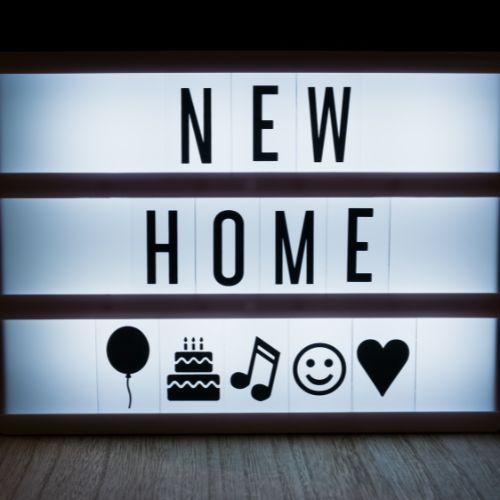
The Influence of Social Media on Interior Design: Inspiration or Homogenization?
|
|
Time to read 4 min

Welcome to our hub of new arrivals! Explore our latest additions, constantly...
|
|
Time to read 4 min
In today's digital age, social media platforms such as Instagram and Pinterest have revolutionized the way we discover and share design inspiration. These platforms have become powerful tools for interior design enthusiasts, professionals, and homeowners alike, offering an extensive range of ideas and trends at the click of a button.
Instagram and Pinterest provide unparalleled access to a vast array of interior design styles, showcasing beautifully curated spaces from across the globe. With just a few swipes or clicks, users can explore an endless stream of inspiring images, discovering unique color schemes, furniture arrangements, and decorative elements.
Interior designers and homeowners can find inspiration for every room in the house, from modern minimalist living rooms to cozy farmhouse kitchens. These platforms allow users to follow their favorite designers, architects, and influencers, creating a personalized feed that caters to their specific design preferences.
Moreover, these platforms enable users to engage with the design community by liking, commenting, and sharing their favorite images. This interaction fosters a sense of community and collaboration, where users can exchange ideas and receive feedback on their own design projects.
Social media has democratized interior design by making it more accessible to a wider audience. Previously, design inspiration was limited to glossy magazines and high-end showrooms, often out of reach for the average person. Now, anyone with a smartphone or computer can gain exposure to a diverse range of design styles, regardless of their location or budget.
Users can find affordable alternatives to high-end furniture, discover DIY projects, and learn valuable design tips and tricks. Social media platforms have become a virtual marketplace, connecting users with designers, artisans, and retailers, making it easier than ever to bring their design ideas to life.
Furthermore, social media has played a significant role in empowering small businesses and independent designers. Through platforms like Instagram and Pinterest, emerging designers can showcase their work to a global audience, bypassing traditional barriers to entry and gaining recognition for their unique creations.
While social media offers a wealth of design inspiration, there is an ongoing debate about whether it has led to the homogenization of interior design styles. With the rapid sharing and reproduction of popular trends, there is a risk that originality and individuality may be compromised.
Platforms like Instagram and Pinterest can create a sense of conformity, as certain design aesthetics gain widespread popularity. This can result in a saturation of similar design choices, making it challenging for unique and innovative styles to gain visibility.
Additionally, the pressure to curate picture-perfect spaces for social media can lead to a focus on aesthetics rather than functionality. Spaces may be designed solely for the purpose of capturing the perfect photo, neglecting the practical aspects of everyday living.
However, it is essential to note that social media platforms are not solely responsible for the homogenization of design styles. They are merely reflecting the collective taste and preferences of the users. Design trends have always evolved and changed over time, influenced by various factors such as cultural shifts, technological advancements, and economic conditions.
Furthermore, social media platforms have also given rise to niche design communities, where users with specific interests and styles can connect and share ideas. These communities celebrate diversity and individuality, fostering a counterbalance to the homogenization trend.
The key lies in striking a balance between using social media as a source of inspiration and maintaining individuality in design. It is important for designers and homeowners to use these platforms as a starting point rather than a blueprint, allowing their own creativity and personal style to shine through.
Design professionals can leverage social media to showcase their unique perspective, sharing behind-the-scenes insights and providing valuable design advice. Homeowners can use these platforms as a tool to refine their preferences and gain a better understanding of their own design aesthetic.
Another way to maintain individuality is by combining elements from different design styles. Social media platforms expose users to a wide range of influences, allowing them to experiment and create personalized hybrids that reflect their own tastes and personality.
Moreover, it is important for users to engage critically with the content they encounter on social media. By questioning and analyzing popular trends, individuals can make informed decisions about their own design choices, ensuring that they stay true to their own vision.
Ultimately, the influence of social media on interior design is undeniable. It has revolutionized the accessibility and availability of design inspiration, empowering individuals to create beautiful spaces. However, it is crucial to approach these platforms with a discerning eye, ensuring that personal style and originality are not lost in the quest for popularity.
Social media should be seen as a tool for inspiration, rather than a dictatorial force. By staying true to one's own vision and incorporating unique elements, interior design can continue to evolve and thrive in the digital age.
In conclusion, social media platforms like Instagram and Pinterest have had a profound impact on interior design. They have opened up a world of possibilities, providing inspiration and accessibility to design ideas. However, it is important to be mindful of the potential pitfalls, such as the homogenization of styles. By utilizing social media as a source of inspiration while maintaining individuality, designers and homeowners can create spaces that are truly unique and reflective of their own personal style.
It is essential to remember that interior design is a form of self-expression, and social media should serve as a tool to enhance and support that expression.